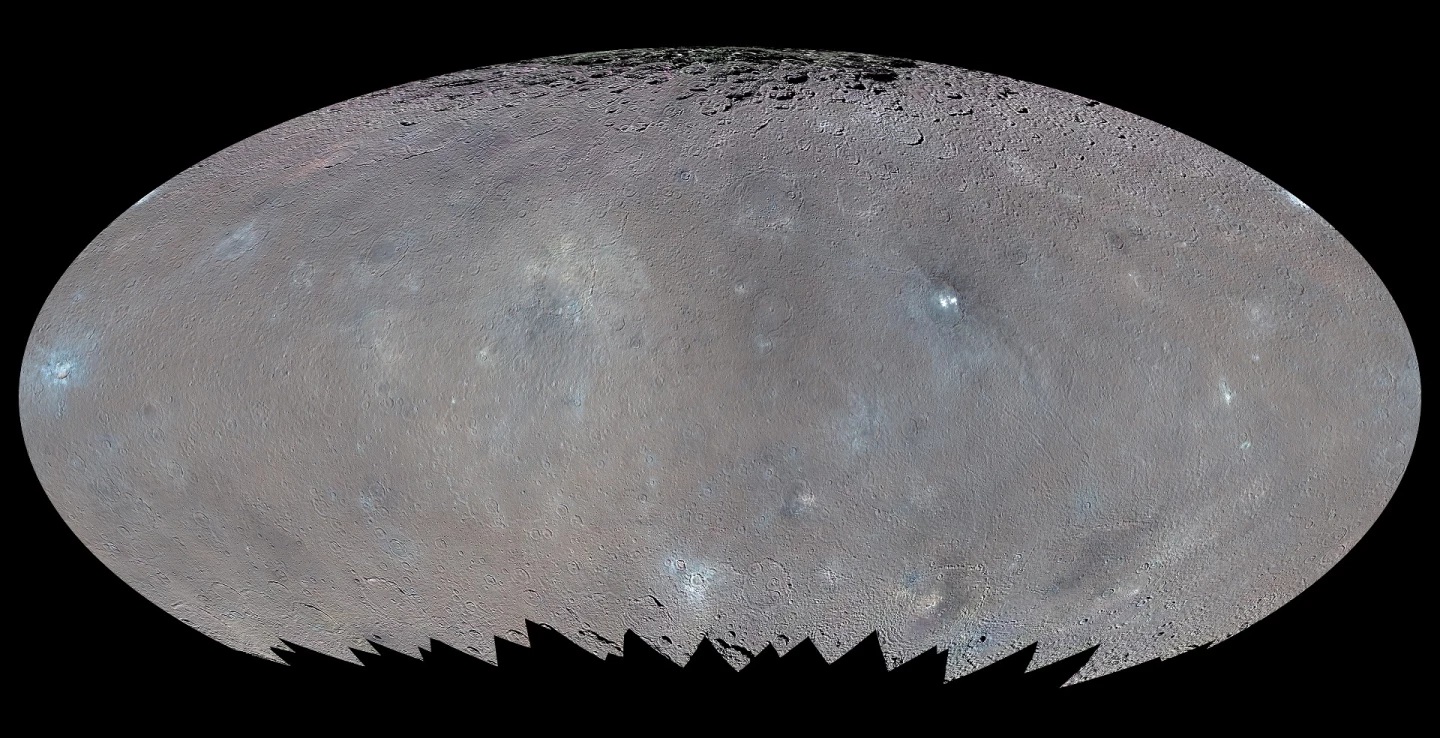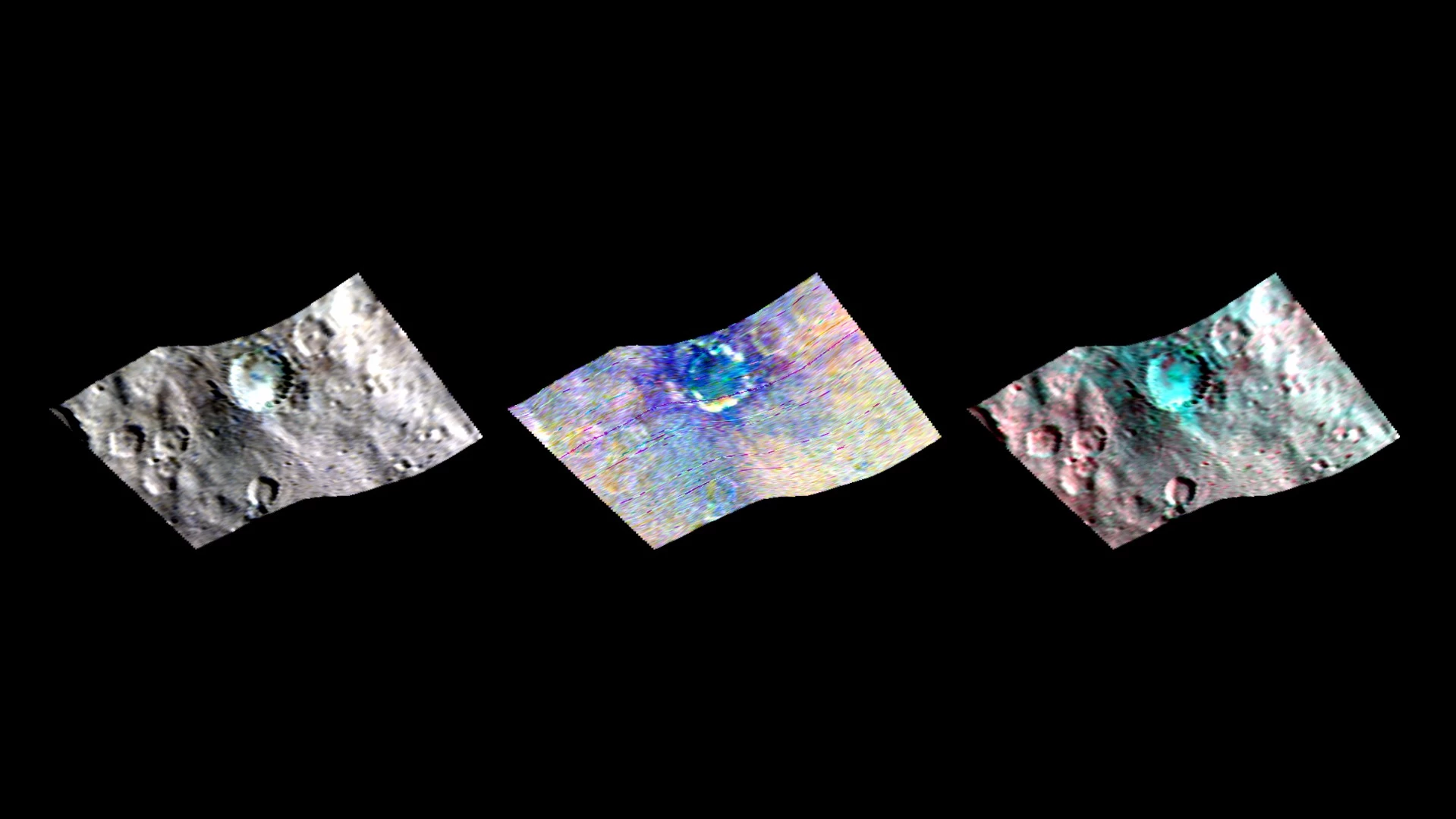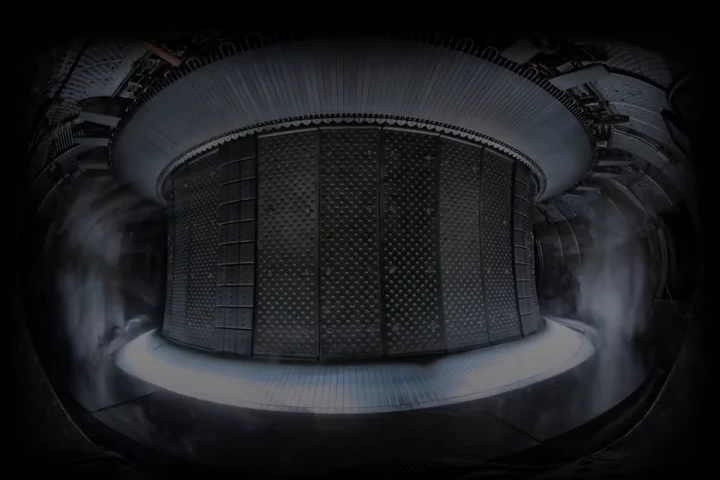Dawn's science team haspresented a treasure trove of data and images captured by thespacecraft as it orbits a mere 240 miles (385 km) above the surfaceof the dwarf planet Ceres. The observations,which include a stunningly detailed view of the famous Occatorcrater, are leading to a series of breakthroughs regarding the natureof the enigmatic wanderer including the first detection of ice wateron the planetoid's surface.
As always, we'll beginwith the Occator crater. Spanning an impressive 57 miles (92 km), theimpact site is believed to be among the youngest of the large cratersscarring the surface of Ceres, with astronomers estimating its age at80 million years. The composite image displays in fine detail agentle dome in the white covered centre of the craterwithin a walled pit, and well as a host of fractures lining the basinof the feature.
The fractures arebelieved to be the hallmarks of recent geological activity.Naturally, the image is dominated by the bright blemishes of what isnow believed to be a kind of salt, not far removed from epsom saltsfound here on Earth, which shine in stark contrast to their dullsurroundings.
Much of the datareturned by Dawn hints at a subsurface layer of ice and volatilematerials. A color-enhanced map of Ceres contained in the newrelease, highlights the distribution of impact sites and thesurprising diversity of surface materials.

Most interestingly,Dawn's science team has observed certain color variations that arebelieved to occur as a result of surface impacts dredging up asubsurface layer of ice and volatile materials. The team believe thatthe surface composition surrounding some impact sites, such as theHaulani crater, may have further altered the properties of theexhumed materials.
Further evidence forthe existence of a subsurface layer of ice, which had been one of theleading theory accounting for the existence of bright deposits onCeres surface was provided byDawn's Gamma Ray and Neuron Detector (GRaND) instrument.
GRaND was designed tomap the interaction between cosmic rays and the dwarf planet'sdesolate surface in order to divine the chemical make-up of Ceres'uppermost meter of regolith. Upon analyzing the datacollected by GRaND, the teamdiscovered that whilst there was an abundance of neutrons at thedwarf planet's equator, the population of the subatomic particles atthe polls was comparatively scarce.

According to the team,this imbalance suggests the presence of significant quantities ofhydrogen located below the surface near Ceres' polar regions. Ashydrogen accounts for two of the three molecules that make up H2O,the team are considering this a positive indicator for the presenceof water ice buried below the surface.
While GRaND hunted foroblique evidence of a buried layer of water ice, Dawn's visible andinfrared mapping spectrometer (VIR) made the first detection of wateron Ceres' surface. The signature was detected in a 6 mile (9 km)-wideimpact site known as Oxo crater, which is located in Ceres' northernhemisphere. Oxo represents the second brightest feature present onCeres' surface, with the Occator crater remaining the brightest.
It is thought that thewater was uncovered either due to the impact or thanks to a morerecent landslide, and it is not yet known whether the water exists inice form or if it is bound in minerals.
Source: NASA









